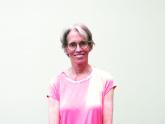News

Should CGM be used for those without diabetes?
- Author:
- Lisa Mulcahy
- Vicki Tedeschi
Publish date: May 4, 2023
This growing demand for CGM use among healthy people is driven by an increasing “fascination” for monitoring every bodily function, as can be seen...
News

How do you live with COVID? One doctor’s personal experience
- Author:
- Vicki Tedeschi
Publish date: August 30, 2022
Early in 2020, Anne Peters, MD, caught COVID-19. The author of Medscape’s “Peters on Diabetes” column was sick in March 2020 before state-mandated...
News
FDA clears tubeless, automated insulin system for children age 2 and older
- Author:
- Vicki Tedeschi
Publish date: August 25, 2022
The Food and Drug Administration has approved use of the Omnipod 5 automated insulin delivery system for kids age 2 and older with type 1 diabetes...
